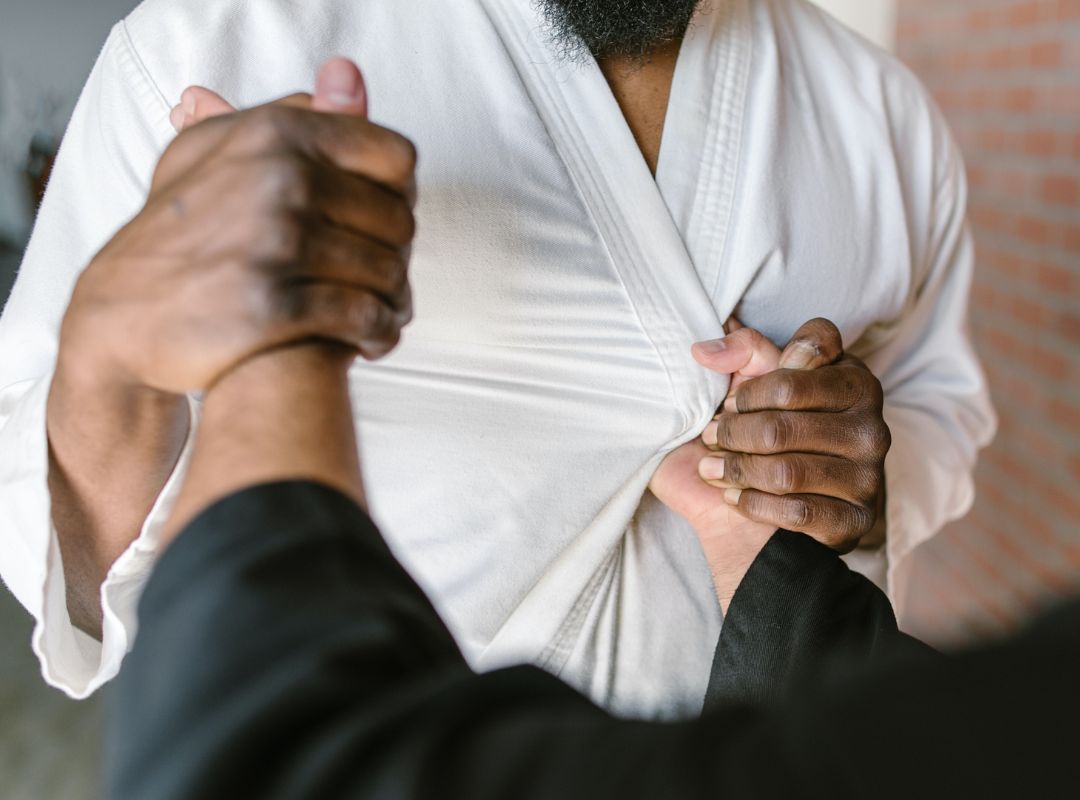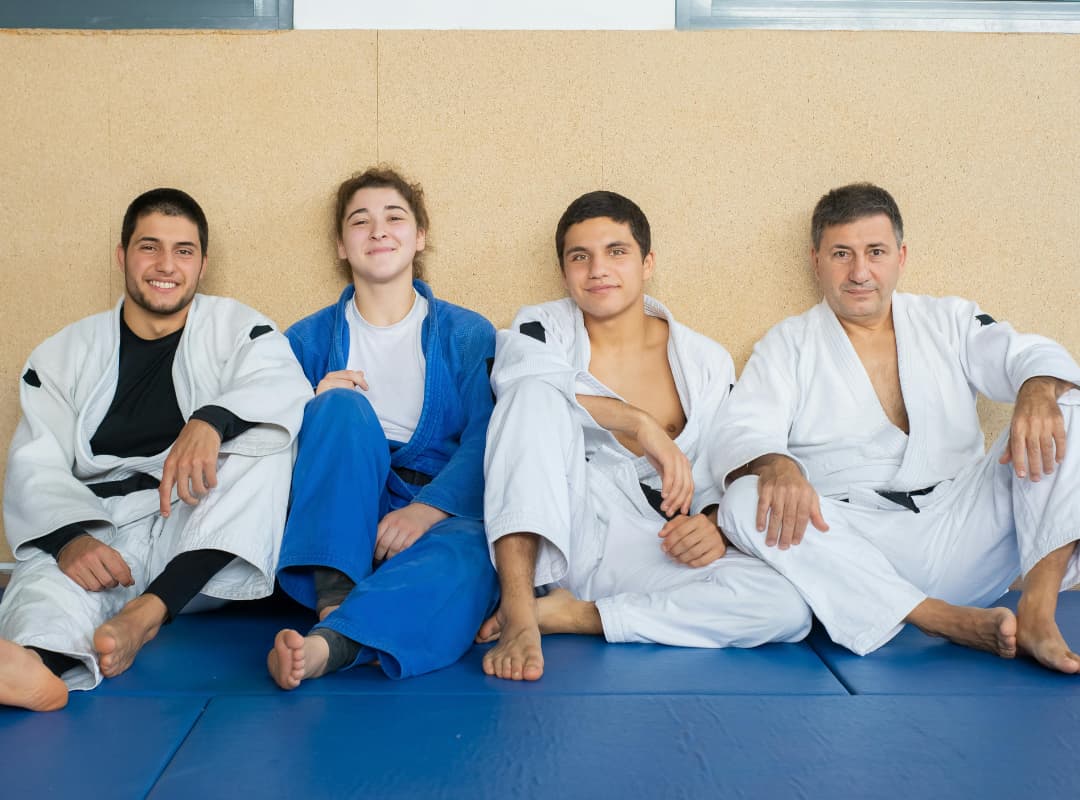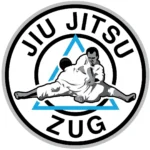
People who practice a martial art wear special clothing for it. Over time, the school of thought has established that kimonos, which martial artists wear, were created to better perform the techniques of self-defense. However, an intensive study of this subject proves the real importance of the kimono in BJJ.
The kimono in BJJ serves a special purpose: it simulates the normal clothes that people wear on the street. However, compared to the conventional clothes, it is almost tear-proof. Thus, it can withstand pulling in Brazilian Jiu Jitsu training.
T-shirts would tear immediately. They prevent martial artists who practice BJJ from performing the techniques correctly. In addition, the collar of the kimono in BJJ is slightly thicker than is the case with other kimonos. This has a specific purpose: the special kimono in Gracie Jiu Jitsu protects the neck and still allows intensive training with demanding techniques of self-defense.
What does kimono mean?
The term kimono comes from Japanese and is composed of two kanji characters. Ki translates as wear and mono stands for one thing. Thus, the term represents the two words: wear clothes. Once upon a time, martial artists in training in Japan wore their normal clothes. This allowed them to better practice possible scenarios that would occur on the street during an attack. They were well prepared for an emergency thanks to the training. If the training had taken place without clothes or only with a thin T-shirt, martial artists would have been less well prepared for an emergency.
The birth of the kimono originated in Judo
The founding father of Judo, Jigoro Kano, introduced in Judo the so-called Keiko-Gi, which is called Karate-Gi in Karate training. Gi also stands for kimono in Japanese. However, it is pronounced and written Gi because it is a single syllable that stands on its own or at the end of the word: Judo-Gi. However, at the beginning of the word, it is Ki, which is where the name kimono comes from.
Therefore, in Brazilian Jiu Jitsu it is equally possible to say BJJ-Gi, but since the origin of the term lies in the Japanese term Kimono, the term Kimono continues to dominate in Gracie Jiu Jitsu.
Judoka changed in the course of time, the judo suit, which they used. They had it sewn tighter. This made it less easy for opponents to grab the kimono and perform a technique. Because every judo technique starts with grabbing the opponent. Judoka have adapted their kimono to the conditions for competitions.
Gracie Jiu Jitsu, on the other hand, is a martial art that teaches self-defense techniques. Students should be able to use them in case of emergency, which is why a kimono sewn for competition, analogous to the judo gi, is out of place in BJJ training.
The question that regularly arises in martial arts training is:
Is training with or without a kimono realistic for an emergency?
Brazilian Jiu Jitsu training with a kimono is more realistic. Street fights prove this. The kimono in BJJ represents the conventional clothing that people wear on the street. Training without a gi, where martial artists wear only a T-shirt, is not realistic. This is because the T-shirt acts as a barrier in this case. Martial artists do not reach for the shirt – knowing full well it could tear.
Those who practice training without a kimono have a significant disadvantage compared to those who regularly train with a kimono. Because, the kimono wearers know and use more holds, which are foreign to the no-gi followers.
The underestimated power of missed opportunities
Various opportunities arise in a fight. It is moments and opportunities that decide how a fight ends. Those who attend only no-gi training also never learn that the collar of clothing – even that of a T-shirt – can serve as a weapon. In what way can the collar of a T-shirt serve as a weapon? The collar can be used to incapacitate a person. In a street fight, where self-defense is involved, this move can be life-saving. In BJJ training, students learn this by using the collar of the kimono for this purpose. However, those who never learned this because no-gi training was always on the schedule cannot use it in a street fight.
The meaning of training without kimono
Nevertheless, even in Gracie Jiu Jitsu there are training sessions without kimono. What is the goal of this particular training? This has a specific purpose: the students should not only focus on the kimono and the associated techniques of self-defense. They should also be able to use the techniques even if the opponent is only wearing a T-shirt.
The special kimono in Gracie Jiu Jitsu
In Gracie Jiu Jitsu, the sleeves of the kimono are a little shorter and the pants are a little wider. The shorter sleeves allow for better grappling, whereas the wider pant legs provide a greater range of motion. Kicks can be executed better as a result.




